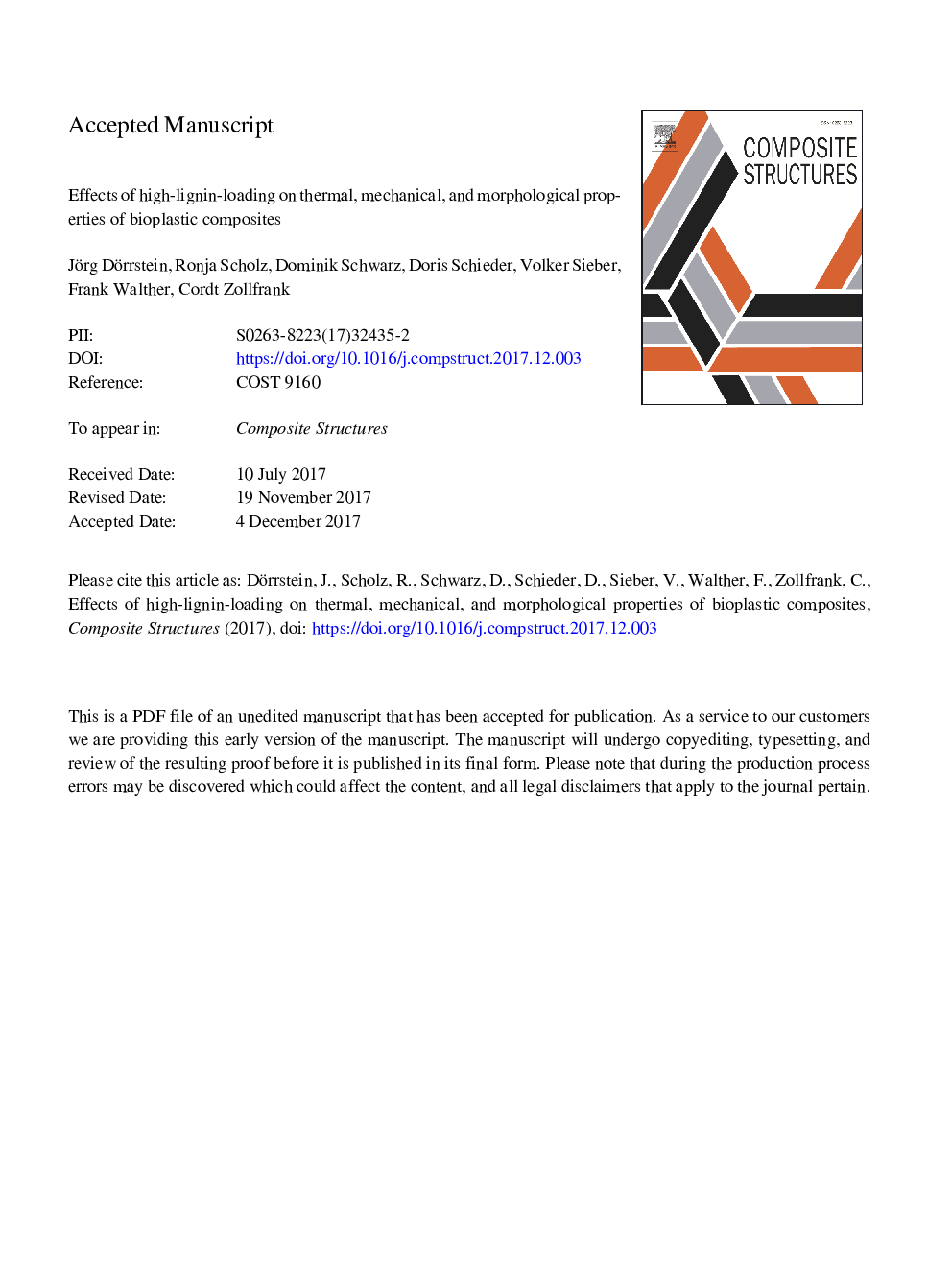| Article ID | Journal | Published Year | Pages | File Type |
|---|---|---|---|---|
| 6703974 | Composite Structures | 2018 | 23 Pages |
Abstract
The present study investigates the effects of high-lignin-loading on properties of lignin/polyethylene-co-vinyl acetate (EVA) rubber composites. Results from mechanical (quasi-static and cyclic) and rheological investigations revealed a brittle-ductile transition around a lignin volume fraction of ÏLâ¯=â¯0.59 coinciding with a twofold increase in steady-shear viscosity. Towards higher lignin contents, a 36% increase in dynamic stiffness Cdyn from ÏLâ¯=â¯0.59 (Cdyn â 350â¯Nâ¯mmâ1) to ÏLâ¯=â¯0.71 (Cdynâ¯ââ¯550â¯Nâ¯mmâ1) was observed by load increase tests (LIT). In addition, analyses of the ultra-micro-hardness revealed less indentation creep towards high-lignin-loading. At ÏLâ¯=â¯0.59, a pronounced relaxation endotherm superimposed on the glass transition (Tg) was observed, which was ascribed to molecular confinement to occur at highly loaded composites. At this point, the molecular weight (Mw) of lignin increased considerably. These results were explained by the different role of lignin at high volume fraction, i.e. a change from lignin as mere stiffness-inducing filler to a strength-imparting and fatigue-resistant matrix component which was supported by morphological analysis.
Keywords
Related Topics
Physical Sciences and Engineering
Engineering
Civil and Structural Engineering
Authors
Jörg Dörrstein, Ronja Scholz, Dominik Schwarz, Doris Schieder, Volker Sieber, Frank Walther, Cordt Zollfrank,
